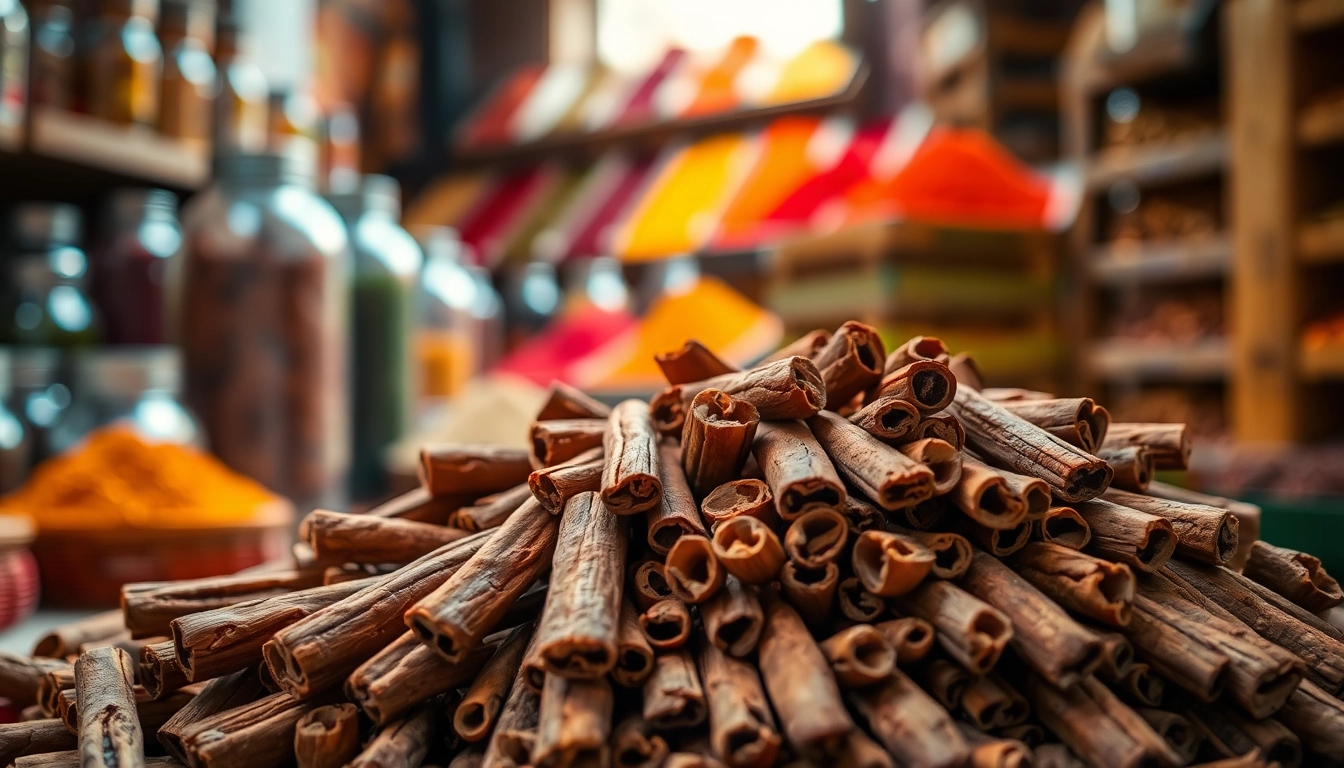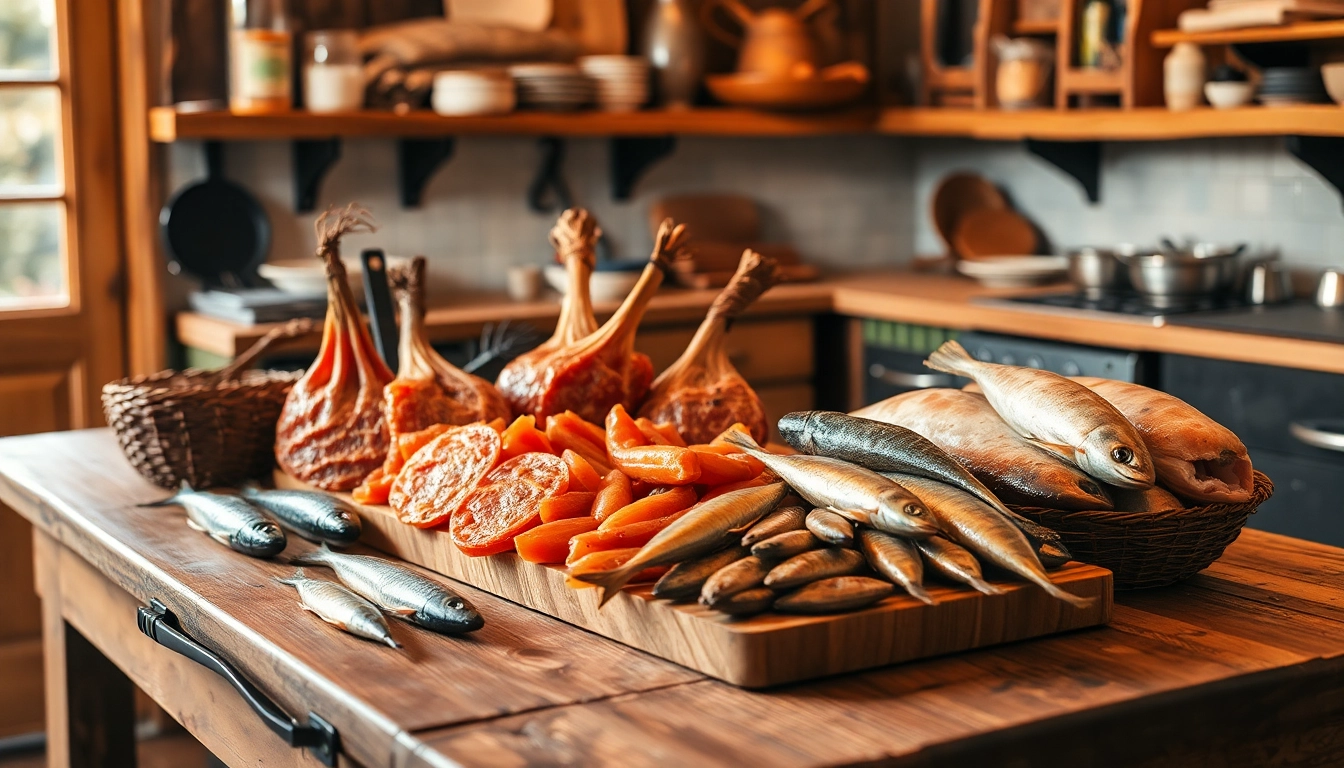Introduction to Cinnamon Bark
Cinnamon bark, a beloved spice with a rich history and myriad uses, comes from the inner bark of trees belonging to the genus Cinnamomum. Among the various types of cinnamon, there are primarily two kinds that garner widespread attention: Ceylon cinnamon and Cassia cinnamon. Known for its warm, aromatic quality, cinnamon bark is utilized in various cuisines around the world and is recognized for its potential health benefits. It has gained popularity not only in cooking but also in traditional medicine. The demand for quality cinnamon has led to products such as Cinnamon Bark, which offer authentic and diverse applications.
What Is Cinnamon Bark?
Cinnamon bark is the dried inner bark of trees from the Cinnamomum genus. The process of obtaining cinnamon bark involves stripping away the outer bark and then processing the inner bark, which naturally curls into the familiar quills (sticks) that we often see in spice containers. Ground cinnamon is made by grinding these quills into a fine powder. The two most popular types of cinnamon bark are:
- Ceylon Cinnamon: Often referred to as ‘true cinnamon’, it has a sweeter, more delicate flavor profile and is less common but highly valued for its purity.
- Cassia Cinnamon: More prevalent in grocery stores, this variety has a stronger, spicier flavor and is typically less expensive than Ceylon cinnamon.
Types of Cinnamon Bark Available
Understanding the different types of cinnamon bark can help consumers make informed choices in both culinary and medicinal uses. Ceylon cinnamon (scientifically known as Cinnamomum verum) is native to Sri Lanka and is often considered superior due to its lower level of coumarin – a compound linked to potential liver damage when consumed in high amounts. In contrast, Cassia cinnamon (primarily Cinnamomum cassia) dominates global spice markets and contains higher coumarin levels, making it a less ideal choice for medicinal purposes but still widely used in cooking.
Historical Uses of Cinnamon Bark in Different Cultures
Cinnamon bark has been revered throughout history, not only for its unique flavor but also for its medicinal properties. Ancient Egyptians used it in the embalming process, while it was celebrated in Ancient China for its ability to warm the body and enhance circulation. In traditional Ayurvedic medicine, cinnamon bark is utilized for its purported ability to balance blood sugar levels and combat digestive issues. This historical reverence has translated into modern applications, where cinnamon bark is still seen as a potent herbal remedy.
Health Benefits of Cinnamon Bark
The health benefits attributed to cinnamon bark are numerous and have been the focus of various studies in recent years. Its utilization spans both traditional practices and contemporary health requirements.
Cinnamon Bark for Digestive Health
Cinnamon bark has long been recognized for its ability to aid digestion. It has carminative properties, helping to reduce gas and bloating. Additionally, cinnamon has been shown to stimulate the digestive system, making it beneficial for individuals who suffer from gastrointestinal discomfort. As a prebiotic, it can also promote the growth of beneficial gut bacteria, further enhancing digestive health.
Impact on Blood Sugar and Weight Management
Several studies indicate that cinnamon bark may play a role in glycemic control, making it a popular choice among those managing insulin resistance or type 2 diabetes. Research suggests that cinnamon can improve insulin sensitivity and lower blood sugar levels after meals. Its properties can assist in weight management by regulating blood sugar spikes, hence reducing cravings for sugary foods.
Antioxidant Properties of Cinnamon Bark
Cinnamon is rich in antioxidants, which combat oxidative stress and inflammation in the body. The potent antioxidant compounds in cinnamon, such as polyphenols, have been shown to protect the body against various chronic diseases, including heart disease. These properties make cinnamon bark an excellent addition to an antioxidant-rich diet.
Using Cinnamon Bark in Cooking
The versatility of cinnamon bark in the culinary world is astounding. From flavoring desserts to enhancing savory dishes, its aromatic profile is a staple in many kitchens.
Common Culinary Applications for Cinnamon Bark
Cinnamon bark can be used in several forms, including whole quills or ground powder. Here are some common applications:
- Sweet Dishes: Cinnamon is a key ingredient in baked goods such as cinnamon rolls, pies, and pastries. It complements desserts made with apples, pears, and chocolate.
- Savory Dishes: In many cultures, cinnamon is used to spice up savory dishes. It pairs well with meats, risottos, and earthy vegetables.
- Beverages: Think chai tea, mulled wine, or spiced apple cider – cinnamon bark adds warmth and depth to drinks.
How to Choose High-Quality Cinnamon Bark
When selecting cinnamon bark, consider the following tips to ensure you’re getting a quality product:
- Look for Ceylon cinnamon for health benefits and flavor.
- Choose organic options to avoid pesticides and other chemicals.
- Inspect for freshness; fragrant, intact pieces are preferable.
Recipes Featuring Cinnamon Bark
Incorporating cinnamon bark into your culinary repertoire can elevate your dishes. Here are a few simple recipes:
- Cinnamon Spiced Oatmeal: Cook oats and stir in ground cinnamon, honey, and sliced apples for a warm breakfast treat.
- Mulled Wine: Simmer red wine with whole cinnamon quills, oranges, and cloves for a festive drink.
- Cinnamon Chicken Skewers: Marinate chicken pieces in a blend of cinnamon, garlic, and honey before grilling for a unique flavor.
Cinnamon Bark in Herbal Remedies
The medicinal applications of cinnamon bark are extensive, and many individuals turn to herbal remedies for natural healing.
DIY Preparations with Cinnamon Bark
Creating your own remedies with cinnamon bark is straightforward. Here are some DIY ideas:
- Cinnamon Tea: Steep a quill of cinnamon in hot water for 10 minutes for a soothing drink.
- Cinnamon Infused Honey: Combine honey with ground cinnamon. Let it sit for a few days in a sealed jar; use it in teas or on toast.
- Cinnamon Essential Oil: Extract essential oil using a carrier oil, though this may require specialized equipment.
Precautions and Potential Side Effects of Cinnamon Bark
While cinnamon bark has many benefits, it is essential to understand potential side effects. High doses of Cassia cinnamon can lead to liver damage due to excess coumarin. Pregnant women and individuals on anticoagulants should use caution. Moderation is key when incorporating cinnamon bark into your routine.
Combining Cinnamon Bark with Other Herbs
Cinnamon bark can be combined effectively with other herbs for enhanced benefits. Pair it with:
- Ginger: For digestive support and anti-inflammatory properties.
- Turmeric: For joint health and antioxidant effects.
- Garlic: To boost the immune system and improve cardiovascular health.
Conclusion and Further Exploration
Final Thoughts on Incorporating Cinnamon Bark
Embracing cinnamon bark as a part of your culinary and health routine can yield significant benefits. Its versatility in cooking and potential positive effects on health only reinforce its status as a cherished spice.
Where to Buy Quality Cinnamon Bark
For those looking to incorporate high-quality cinnamon bark, consider specialty spice shops, health food stores, or online retailers that focus on organic and pure products. Products such as Cinnamon Bark can be an excellent choice for ensuring quality and authenticity.
Future Trends in Cinnamon Bark Usage
The future of cinnamon bark looks promising, with a growing interest in its health benefits leading to increased incorporation into health foods and beverages. Innovations in the culinary arts may see more creative uses of this celebrated spice, enhancing its presence in both everyday dishes and gourmet experiences.



